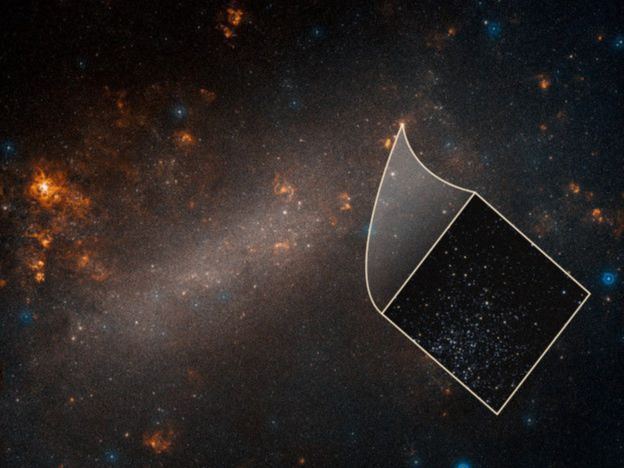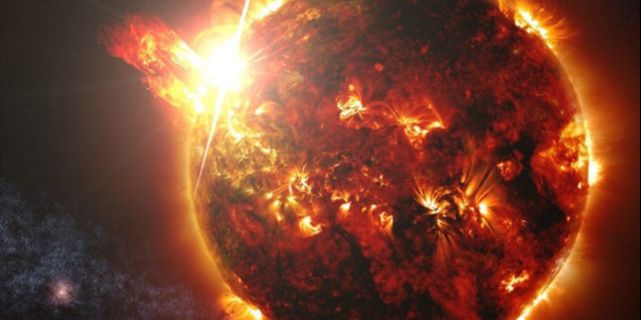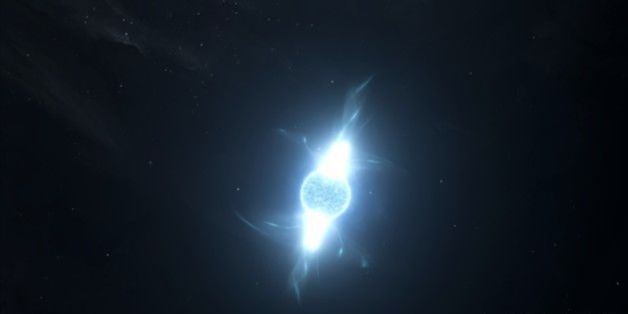Speaking of the night sky, the bright and shining stars on the black film must come to mind. To the naked eye, there may be very few stars in a certain direction, but as long as you use an astronomical telescope to expose it for a period of time, you can find that the area with sparse stars actually hides a dreamy and magnificent scene of prosperity.

Everyone must know that every star we see with the naked eye is actually a star that can emit light like the sun. The light they emit reaches the earth and our eyes before we can see their existence.
Because it is full of stars, and the stars also emit high temperature and strong light, “the universe is hot” has become many people’s first impression of the universe.
celestial terrifying temperature

In fact, the stars in the universe are indeed very hot, and even the word “hot” has no way to describe their temperature. Take our sun as an example. It is a yellow dwarf star of spectral type G with a surface temperature of about 5200°C and an inner core temperature of about 15 million degrees.
Although the high temperature of more than 10 million degrees is unimaginable, this is not the highest temperature of stars, or there are many stars whose temperature is much higher than that of the sun. For example, the surface temperature of Vega is almost twice that of the sun. reached about 9500°C.
Of course, this is far from the limit of a star’s temperature. There is a star code-named “WR 102” in the constellation Sagittarius, and its surface temperature has reached an astonishing 200,000 ° C, which is 36 times the surface temperature of the sun.

200,000 degrees Celsius is the hottest star ever discovered by humans, but it is still far from the hottest celestial body, because according to scientists’ calculations, the surface temperature of a neutron star can reach 1.2 billion degrees, and its inner core temperature can reach the level of subversion. 10 billion degrees known.
Although the temperature of neutron stars is exaggerated, they are too far away from humans, so we will not discuss them. We still focus on the sun.
Because of the existence of the sun, we can feel the warm sunlight on the earth. What many people don’t know is that although the earth can feel the warmth of the sun, the vast space between the earth and the sun is actually very low in temperature. Even close to absolute zero.
According to scientists’ calculations, the average temperature of the universe is only -270.4245 ℃.
Maybe they are used to the high temperature of thousands or even hundreds of thousands of stars. Many people think that -270.4245℃ is nothing at all, at least it has to be a few thousand or hundreds of thousands of degrees below zero to be considered as low temperature, but in fact -270.4245℃ is really very cold. low.
Why?
We must first know what temperature is. In a broad sense, temperature refers to the speed or intensity of molecular motion, and there is theoretically no upper limit to the intensity (more than the Planck temperature is meaningless for humans), so there will be tens of billions of high temperatures.
However, it has a lower limit, which is when the molecules are all at rest, that is -273.15°C, which is what we often call “absolute zero”.
Like the speed of light, absolute zero is just a theoretical value, it can only be approached infinitely, but not really reached. Because many particles have no rest mass, if such particles are “still”, they are “disappeared” in the true sense.
In our daily life, it is impossible for something to disappear out of thin air simply by lowering the temperature. Therefore, from this perspective, we can well understand the characteristics of absolute zero that can never be reached.
After understanding the particularity of “absolute zero”, we can know what kind of concept -270.4245°C is. It may not be as scary as the high temperature of tens of billions of degrees, but from an extreme point of view, it is not inferior to the high temperature of tens of billions of degrees.
Back to the topic, the sun heats the earth, and even directly tans Venus into a “pressure cooker”. Why is the vast space area cold?
As just said, the essence of temperature is the movement of microscopic particles, so it needs a medium to express it. So what medium in space can express temperature? The answer is no. You should know from the word “space” that it means “nothing” at a macro level.
Of course, although there is nothing on the macro level, space is not a “vacuum” in the absolute sense. There are still many microscopic particles that are invisible to the naked eye. It’s just that the density of these microscopic particles is extremely low, which is extremely low. , so that it cannot show the properties of temperature, which leads to the “temperature” in space being close to absolute zero.
In addition, the extremely low density of the universe also affects the transfer of heat from stars. For example, when the radiation is released from the sun, its intensity is about 64 million watts per square meter, and when it travels through space to the earth, the radiation intensity is only 1370 watts per square meter, which is higher than the original The intensity is 47,000 times lower.
Note that such a violent decay of energy occurs at a distance of only 0.000016 light-years, and it can be seen that the decay will be more severe at further distances.
For example, Pluto, which is 5.87 billion kilometers away from the sun, is almost unaffected by any solar radiation, so its surface temperature is only 33°C higher than absolute zero.
It takes 5.46 hours for light to travel from the sun to Pluto, which is very close compared to the distance of several light-years between stellar systems, but even at such a close distance, the temperature is already so low, so the entire universe It is not surprising that the average temperature is -270.4245°C.

Is Venus really a “pressure cooker” by the sun?
In fact, this statement is not accurate, because to be precise, it is not “sun” into a pressure cooker, but “covered” into a pressure cooker.
Because there is no magnetic field protection, the violent solar wind ionizes the atmosphere of Venus, causing Venus to lose all water, and without water, the carbon-silicon on the planet cannot be recycled, and the volcanoes emit a large amount of greenhouse gas-carbon dioxide.
Over time, Venus has formed an atmosphere that is several kilometers thick and mainly composed of carbon dioxide. This thick atmosphere “covers” the solar radiation in it, and the temperature and pressure of Venus are increasing. The surface environment of the “pressure cooker”.



I am shocked by this,